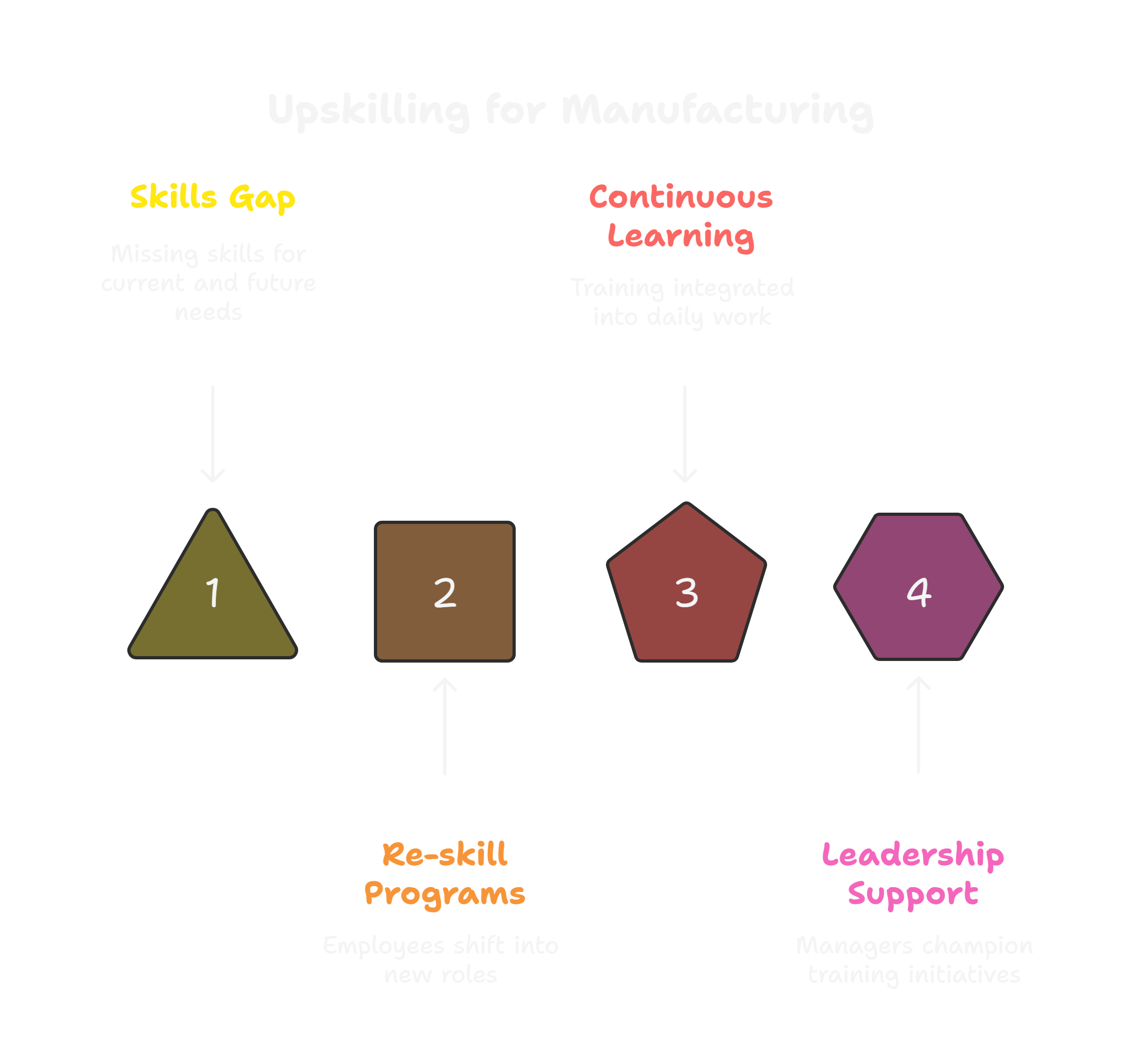Grow Your Team: Essential Upskilling Initiatives for Manufacturing

If you work in manufacturing in Australia, you know the ground never stands still. New machines, updated processes, and changing market needs demand more from your workforce than ever before. The real question is not whether you need to train your people, but how you can build a system that keeps them learning, adapting, and growing. That is where upskilling initiatives come into play.
This guide will walk you through the importance of upskilling in manufacturing, the strategies you can apply, and how companies like Chandler Personnel can support you in creating stronger teams. By the end, you will see why investing in people is not just an option—it is the bedrock of long-term success.
Why Upskilling Matters in Manufacturing
Think of your workforce as the engine of your factory. Without regular care and attention, even the strongest engine will struggle. The same is true for your employees. They need fresh skills to keep pace with new technology, safety requirements, and production demands.
Upskilling initiatives give your people the tools they need to do their jobs better while preparing them for future responsibilities. For you as a leader—whether you are an HR Manager, Production Manager, or Manufacturing Executive—this means less downtime, higher productivity, and employees who feel valued.
When workers see opportunities for employee growth, they are more likely to stay loyal. You will find fewer recruitment headaches, and your business will benefit from steady progress.
The Foundation of Effective Upskilling Initiatives
So how do you build a strong program for your manufacturing team? It starts with a few key ingredients:
- Clear goals – What skills are missing today, and what will be needed tomorrow?
- Re-skill programs – These give current employees the chance to shift into new roles when machines, systems, or market conditions change.
- Continuous learning – Training should not be a once-a-year event. It should be part of everyday work life.
- Support from leaders – When managers take training seriously, employees follow their lead.
Just like constructing a building, you cannot skip the foundation. Without these basics, your upskilling efforts may crumble before they start.

Types of Upskilling in Manufacturing
There is no one-size-fits-all approach to upskilling initiatives. You have options depending on your business needs, budget, and the direction you want to move in.
1. On-the-Job Training
This is the bread and butter of manufacturing training. Employees learn directly from supervisors or experienced colleagues while working. It builds practical skills that can be applied immediately.
2. Classroom Training
Sometimes it pays to step away from the machines. Structured sessions in a classroom setting can help employees grasp theory, compliance rules, or new safety standards before applying them in practice.
3. Digital Learning
Online courses or training modules make continuous learning flexible. Employees can complete lessons at their own pace, whether it is during downtime on the floor or after hours.
4. Mentorship Programs
Pairing seasoned workers with new hires not only transfers technical knowledge but also passes on workplace culture. A wise mentor can teach lessons that no textbook can cover.
5. Re-skill Programs
When automation or industry change threatens to make certain jobs redundant, re-skill programs are lifesavers. They allow employees to transition into other roles within your organisation, reducing turnover and keeping skilled workers in-house.
Benefits of Upskilling Initiatives
The advantages of building a culture of training and learning are plain to see:
- Employee growth – Staff members see a clear path forward, boosting morale and engagement.
- Improved safety – Well-trained employees are less likely to make costly mistakes.
- Higher productivity – Updated skills translate into faster, more accurate work.
- Better retention – When employees feel invested in, they stick around.
- Future readiness – You will not be caught off guard when industry trends shift.
In short, when you put in the effort to grow your people, your whole business grows with them.
The Role of Leadership in Upskilling
You can have the best upskilling initiatives on paper, but without leadership buy-in, they may never take off. As an HR Manager, Talent Acquisition Specialist, or Production Manager, your job is to set the tone.
When leaders openly support training, participate in sessions, and reward progress, employees notice. Leadership should also create open communication channels, allowing employees to suggest areas where they feel additional training is needed. Think of it as a two-way street—guidance flows down, and feedback flows up.
Building a Culture of Continuous Learning
Culture is not built overnight, but with steady effort, you can create an environment where continuous learning becomes second nature. Start with small steps:
- Make training part of regular team meetings.
- Celebrate employees who complete new certifications.
- Provide recognition for those who take part in re-skill programs.
- Encourage curiosity—let workers ask questions and seek out new skills.
Over time, this builds a workforce that is not just reactive but proactive. Instead of waiting for change to knock on the door, your team will be ready to greet it.
Upskilling as a Retention Strategy
Recruitment in Australia’s manufacturing sector can be challenging. Instead of constantly searching for new talent, why not grow the people you already have? Upskilling initiatives reduce turnover by showing employees they have a future in your company.
If you offer training opportunities, workers see more than just a paycheck. They see a career. That is a powerful reason to stay—and a smart strategy for keeping recruitment costs under control.
How Chandler Personnel Supports Upskilling
At Chandler Personnel, we understand the unique challenges of building strong manufacturing teams in Australia. From recruitment to training strategies, we help you match the right people with the right opportunities.
Our approach focuses on connecting your business with candidates who are ready to grow, while also supporting your existing staff with programs that promote employee growth. For more on how we support manufacturing businesses, visit our Manufacturing Services Page.
Steps to Launch an Upskilling Initiative
.png)
Here is a simple framework to guide you:
- Assess your current workforce – Identify gaps in skills.
- Define training objectives – Be clear about what you want to achieve.
- Choose the right training methods – Match delivery to the skills needed.
- Engage employees – Get feedback and encourage participation.
- Measure results – Track improvements in performance and productivity.
- Adapt and adjust – Keep the program flexible for future needs.
Think of it as tuning an instrument—you want the right harmony between business goals and employee development.
If you are ready to build stronger manufacturing teams through upskilling initiatives, now is the time to act. Contact Chandler Personnel today to discuss how we can help you design programs that drive employee growth and prepare your workforce for tomorrow.
Visit our Manufacturing Services Page to learn more and get started.